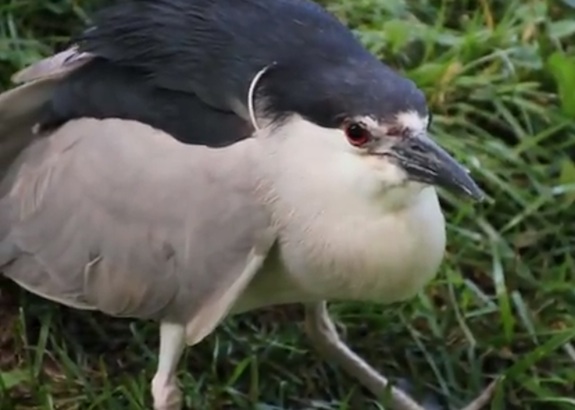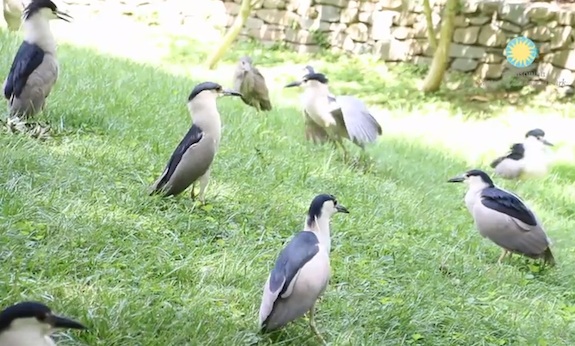VIDEO: Herons Crash the Zoo
Black-crowned night herons have been using the Zoo’s grounds for breeding for more than a century and the tradition continues
![]()
Last week, National Zoo officials spotted several black-crowned night herons roaming the property. Within two weeks, they expect to see hundreds more because the birds are the one species that come and go as they please at the Zoo. The black and white birds have been nesting there since 1889, before the Zoo was founded, and every year around mid-March, they fly in and visit until around mid-September.
Though the population is doing fine worldwide, in the mid-Atlantic region the status of the birds is threatened due to habitat loss. According to biologist Sara Hallager, the big draw that keeps the birds coming back to the Zoo year after year might be the plentiful free food and lush grounds.
At first, the breeding birds competed with the Zoo’s own collection of animals at the Bird House, she says. But then staff began feeding the herons separately. Now, with daily 2 p.m. feedings, the visiting animals have actually become a bit of an attraction when they get their handouts out behind the Bird House.

These heron are much shorter than related species. Courtesy of the Zoo

Catch daily feedings at 2 p.m. behind the Bird House. Courtesy of the Zoo
The first scouts typically arrive in mid-March, returning with the group two weeks later. Around the Bird House, they can be seen building nests for the next generation. One month later, the chicks are born. The group stays through mid-September and disappear suddenly just before the chill in the Fall. They are believed to winter in southeastern states or even the Caribbean.
Other than the occasional false alarm when a visitor thinks that that perhaps one of the Zoo’s birds has escaped, the annual visit is a welcomed sight–the Zoo’s very own sign of spring on its way.
/https://tf-cmsv2-smithsonianmag-media.s3.amazonaws.com/accounts/headshot/Leah-Binkovitz-240.jpg)
/https://tf-cmsv2-smithsonianmag-media.s3.amazonaws.com/accounts/headshot/Leah-Binkovitz-240.jpg)